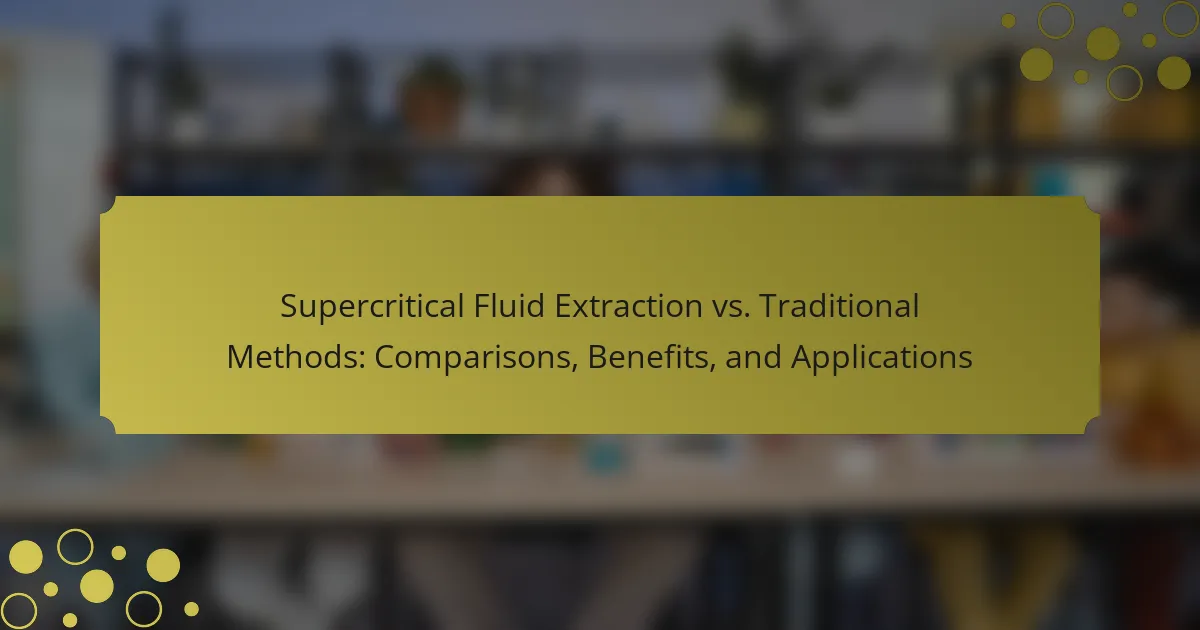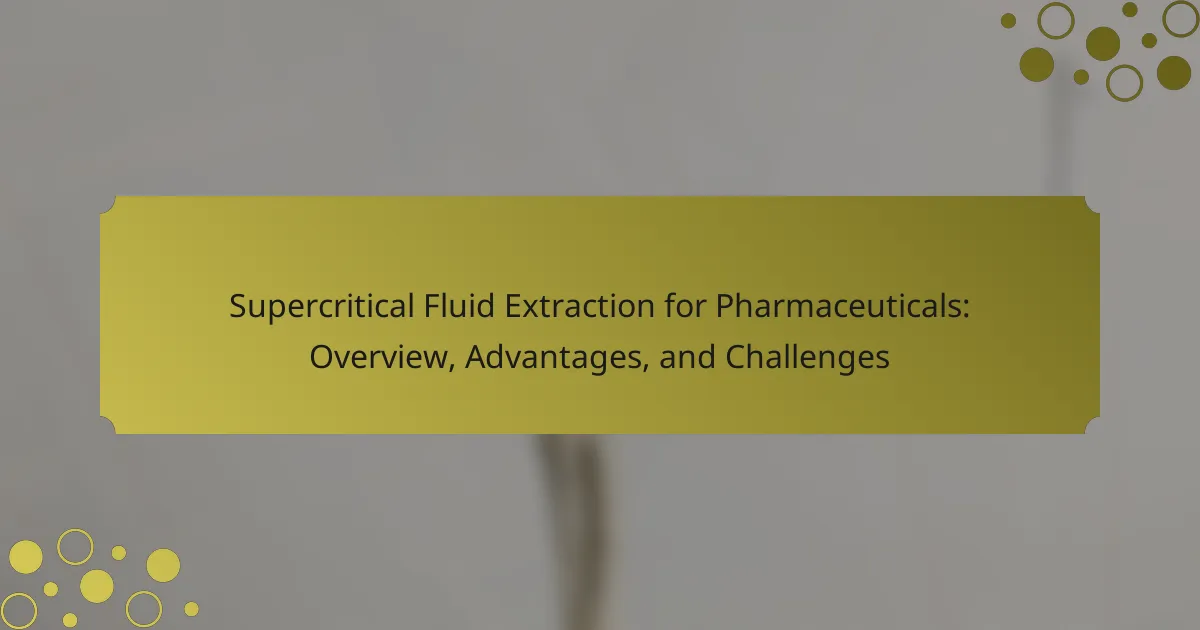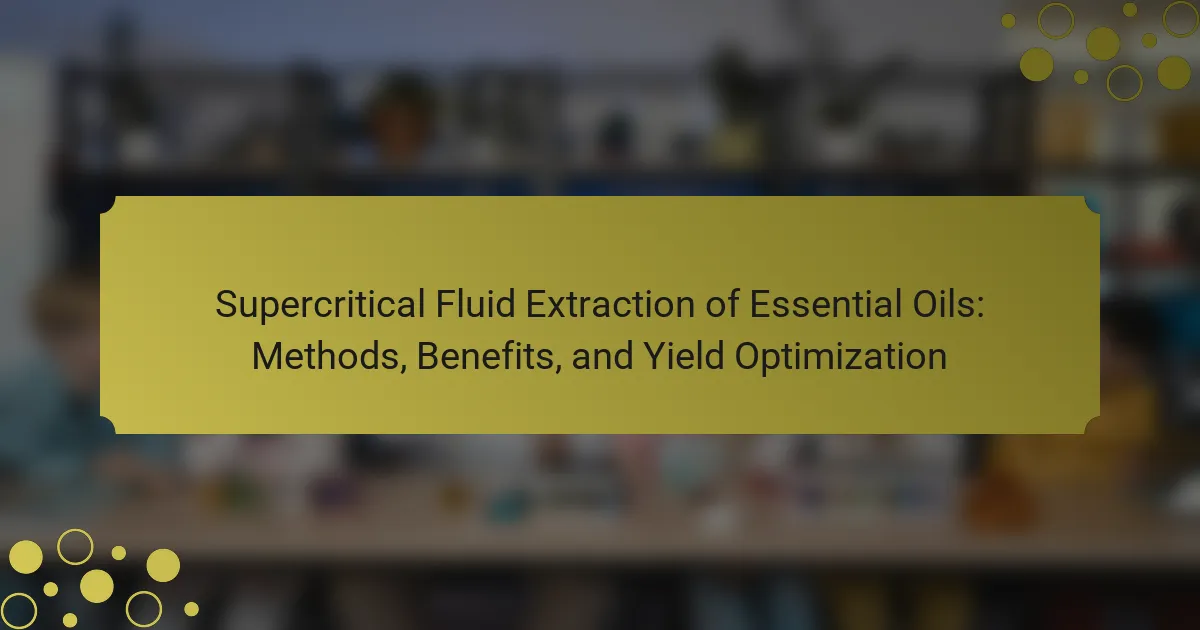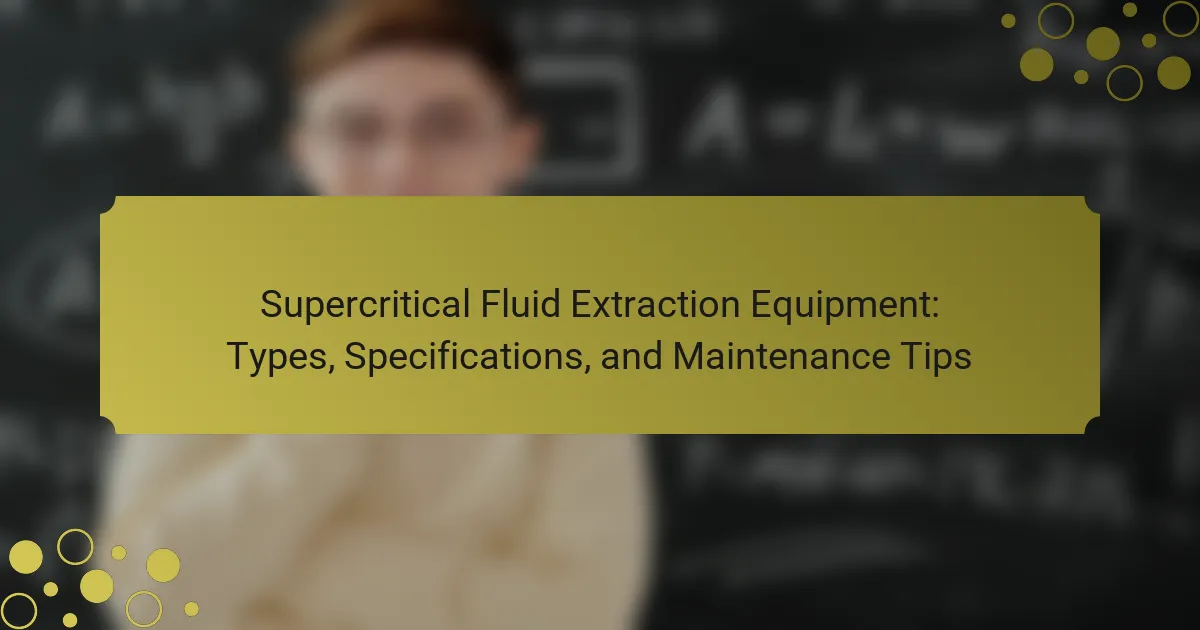Supercritical Carbon Dioxide Extraction (SC-CO2) is a method that utilizes supercritical carbon dioxide as a solvent to extract various compounds from materials. This technique is particularly effective in industries such as food, cosmetics, and pharmaceuticals, where it is used to obtain essential oils, flavors, and bioactive compounds without the use of harmful solvents. The process involves precise control of temperature and pressure, which enhances extraction efficiency and preserves the quality of the compounds. Additionally, incorporating co-solvents and optimizing extraction parameters can broaden the range of extractable materials and improve yield. This article provides an overview of the SC-CO2 extraction process, its benefits, and its diverse applications across multiple industries.
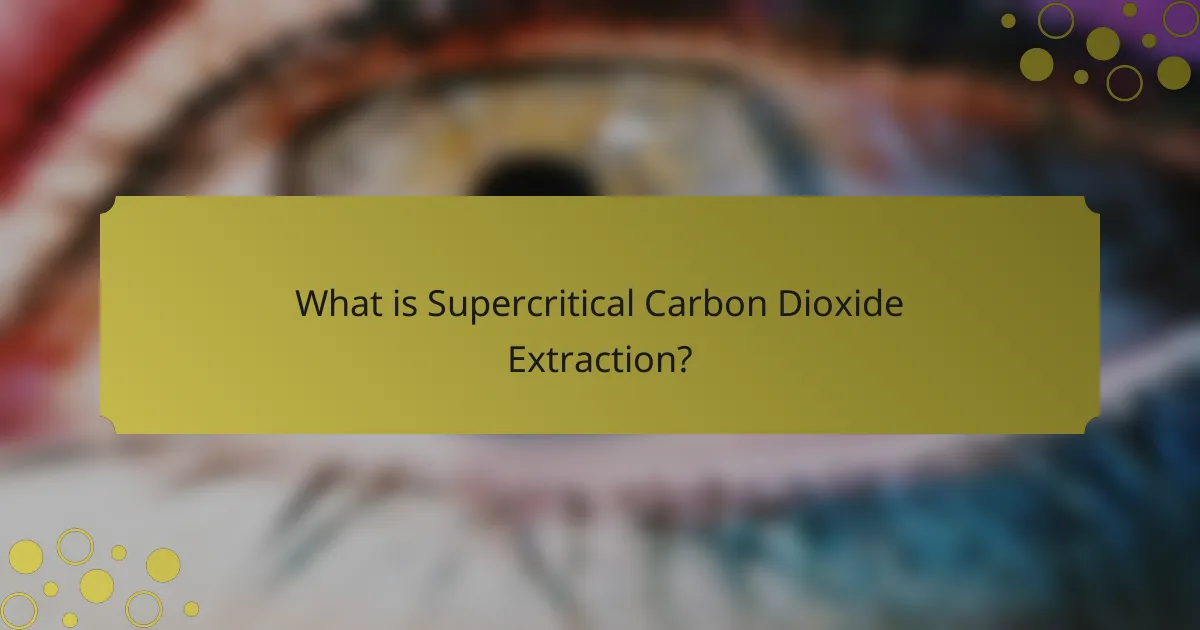
What is Supercritical Carbon Dioxide Extraction?
Supercritical Carbon Dioxide Extraction is a method that uses supercritical CO2 as a solvent to extract compounds from various materials. In this process, carbon dioxide is subjected to high pressure and temperature, transitioning it into a supercritical state. This state exhibits properties of both a gas and a liquid, allowing it to penetrate materials effectively. Supercritical CO2 selectively dissolves non-polar compounds, making it ideal for extracting essential oils, flavors, and active ingredients. This technique is widely used in industries such as food, cosmetics, and pharmaceuticals. It is favored for being environmentally friendly, as it avoids harmful solvents. Additionally, supercritical CO2 extraction preserves the integrity and quality of the extracted compounds.
How does Supercritical Carbon Dioxide Extraction work?
Supercritical Carbon Dioxide Extraction uses carbon dioxide in a supercritical state to extract compounds from materials. In this process, carbon dioxide is heated and pressurized until it becomes supercritical, meaning it has properties of both a gas and a liquid. This supercritical CO2 can penetrate materials like a gas while dissolving compounds like a liquid.
The supercritical CO2 then interacts with the target compounds, dissolving them effectively. After extraction, the pressure is reduced, allowing the CO2 to return to a gaseous state. This leaves behind the extracted compounds without solvent residues.
This method is widely used in industries such as food, cosmetics, and pharmaceuticals due to its efficiency and ability to preserve the integrity of the extracted compounds. Studies show that supercritical CO2 extraction can yield higher purity and quality compared to traditional methods.
What are the key components of Supercritical Carbon Dioxide Extraction?
The key components of Supercritical Carbon Dioxide Extraction include carbon dioxide, pressure, and temperature control. Carbon dioxide acts as a solvent in its supercritical state. This state is achieved by applying high pressure and moderate temperature. The supercritical CO2 can penetrate materials and dissolve compounds effectively. The extraction process requires specialized equipment like a high-pressure extractor. The efficiency of extraction depends on the solubility of the target compounds in supercritical CO2. Additionally, the process can be adjusted for selectivity by modifying pressure and temperature parameters. These components work together to yield high-quality extracts.
What conditions are required for Supercritical Carbon Dioxide Extraction?
Supercritical Carbon Dioxide Extraction requires specific temperature and pressure conditions. Typically, the temperature must be above 31.1 degrees Celsius. The pressure should be above 73.8 bar to maintain carbon dioxide in a supercritical state. These conditions allow carbon dioxide to act as a solvent. This extraction method efficiently separates desired compounds from various materials. The supercritical state enhances the solvent’s ability to dissolve non-polar compounds. Research indicates that these parameters optimize yield and purity in extractions.
What are the primary benefits of Supercritical Carbon Dioxide Extraction?
Supercritical Carbon Dioxide Extraction (SC-CO2) offers several primary benefits. It is a clean extraction method that leaves no harmful residues. SC-CO2 uses carbon dioxide in a supercritical state, which allows it to act as a solvent. This process effectively extracts essential oils and other compounds without degrading them. The extraction process is efficient, yielding high-quality products. Additionally, SC-CO2 is environmentally friendly, reducing the need for organic solvents. It also allows for precise control over extraction parameters, enhancing product consistency. These benefits make SC-CO2 a preferred method in various industries, including food and pharmaceuticals.
How does Supercritical Carbon Dioxide Extraction ensure product purity?
Supercritical Carbon Dioxide Extraction ensures product purity by using carbon dioxide in a supercritical state to extract compounds. In this state, carbon dioxide acts as a solvent, effectively dissolving desired compounds while leaving impurities behind. The process operates at low temperatures, which helps preserve the integrity of sensitive compounds. Additionally, supercritical CO2 is non-toxic and does not leave harmful residues, enhancing product safety. Studies show that this method can selectively extract specific compounds, further ensuring purity. This extraction technique is widely used in industries like food and pharmaceuticals, where product purity is critical.
What environmental advantages does Supercritical Carbon Dioxide Extraction offer?
Supercritical Carbon Dioxide Extraction (SC-CO2) offers several environmental advantages. It is a green extraction method that uses carbon dioxide in a supercritical state. This process reduces the need for harmful solvents, minimizing chemical waste. SC-CO2 is non-toxic and leaves no residual solvents in the final product. It operates at lower temperatures, preserving sensitive compounds and reducing energy consumption. Additionally, carbon dioxide is a renewable resource, as it can be captured from the atmosphere. According to research published in the Journal of Cleaner Production, SC-CO2 extraction has a lower carbon footprint compared to traditional methods. These factors contribute to a more sustainable extraction process.
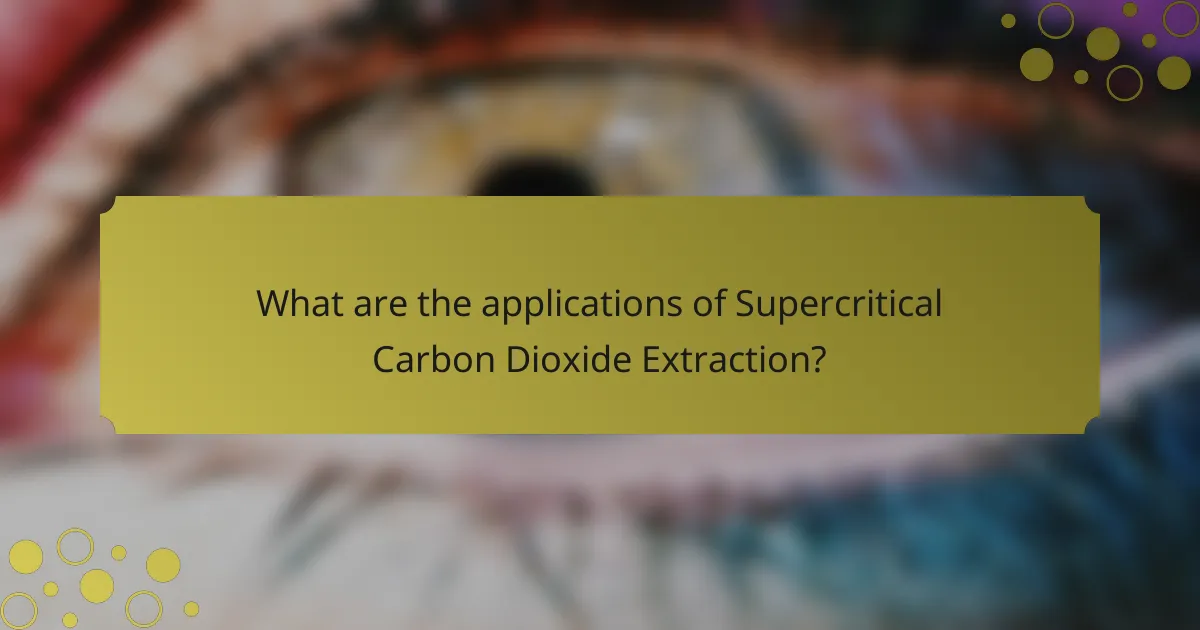
What are the applications of Supercritical Carbon Dioxide Extraction?
Supercritical Carbon Dioxide Extraction (SC-CO2) is widely used in various industries. Its applications include extracting essential oils from plants. It is also utilized in the food industry for decaffeinating coffee. SC-CO2 is effective in isolating compounds from natural products. The cosmetic industry employs this method for extracting active ingredients. Furthermore, it is used in pharmaceuticals for extracting bioactive compounds. SC-CO2 extraction is favored due to its environmentally friendly profile. This method avoids harmful solvents and produces high-purity extracts.
In which industries is Supercritical Carbon Dioxide Extraction commonly used?
Supercritical Carbon Dioxide Extraction is commonly used in the food and beverage, cosmetic, and pharmaceutical industries. In the food and beverage sector, it extracts flavors, fragrances, and essential oils. The cosmetic industry utilizes it for extracting active ingredients for skincare products. In pharmaceuticals, it aids in extracting compounds for drug formulation. Each industry benefits from the method’s efficiency and the purity of extracts.
How is Supercritical Carbon Dioxide Extraction applied in the food industry?
Supercritical Carbon Dioxide Extraction is applied in the food industry primarily for extracting flavors, oils, and active compounds. This method uses carbon dioxide in a supercritical state, where it exhibits properties of both a gas and a liquid. It effectively dissolves non-polar compounds, making it ideal for extracting essential oils from herbs and spices.
Additionally, supercritical CO2 extraction is used to decaffeinate coffee and tea without leaving harmful residues. The process is efficient, allowing for high-quality extracts with minimal thermal degradation. Studies show that this method retains more flavor and aroma compared to traditional extraction methods.
Furthermore, it is environmentally friendly, as CO2 is non-toxic and can be recycled within the system. The food industry utilizes this technology to enhance product quality while ensuring safety and sustainability.
What role does Supercritical Carbon Dioxide Extraction play in the pharmaceutical sector?
Supercritical Carbon Dioxide Extraction is crucial in the pharmaceutical sector for its efficiency in isolating active compounds. This method uses supercritical CO2 to extract essential oils, alkaloids, and other bioactive substances from plant materials. It operates at low temperatures, preserving the integrity of heat-sensitive compounds. Supercritical CO2 acts as a solvent, effectively separating desired compounds without leaving harmful residues. This extraction method enhances the purity and quality of pharmaceutical ingredients. Research shows that it can yield higher extraction rates compared to traditional methods. Additionally, it is environmentally friendly, reducing the need for organic solvents. Overall, Supercritical Carbon Dioxide Extraction is a vital process that improves the safety and efficacy of pharmaceutical products.
What are some challenges associated with Supercritical Carbon Dioxide Extraction?
Supercritical Carbon Dioxide Extraction faces several challenges. High operational costs are a significant barrier. The technology requires expensive equipment and maintenance. Additionally, the extraction process can be complex. This complexity necessitates skilled personnel for operation. Another challenge is the solubility of certain compounds. Not all desired compounds dissolve well in supercritical CO2. Temperature and pressure control is also critical. Inadequate control can lead to inconsistent extraction results. Lastly, regulatory hurdles may arise. Compliance with safety and environmental regulations can complicate implementation.
What are the cost implications of implementing Supercritical Carbon Dioxide Extraction?
The cost implications of implementing Supercritical Carbon Dioxide Extraction (SCE) include high initial investment and operational expenses. The initial setup costs can range from $100,000 to several million dollars, depending on the scale and complexity of the system. Equipment for SCE is specialized and often expensive, contributing to these upfront costs. Additionally, ongoing costs involve electricity, maintenance, and labor.
Operational efficiency can offset some costs, as SCE is known for high extraction yields and reduced solvent usage. Industry reports indicate that SCE can lead to lower long-term costs compared to traditional extraction methods due to reduced waste and higher product quality. However, the overall cost-effectiveness of SCE varies based on the specific application and scale of production.
How can technical limitations affect Supercritical Carbon Dioxide Extraction processes?
Technical limitations can significantly impact Supercritical Carbon Dioxide (SC-CO2) Extraction processes. These limitations include pressure and temperature constraints, which affect the efficiency of extraction. Insufficient pressure may hinder the solvent’s ability to dissolve target compounds. Low temperatures can reduce the solubility of certain materials, impacting yield. Equipment design flaws can lead to inefficiencies and increased operational costs. Additionally, the scalability of SC-CO2 processes can be limited by these technical challenges. Research indicates that optimizing these parameters is crucial for improving extraction outcomes. For instance, a study published in the Journal of Supercritical Fluids highlights the importance of maintaining optimal conditions for maximum extraction efficiency.
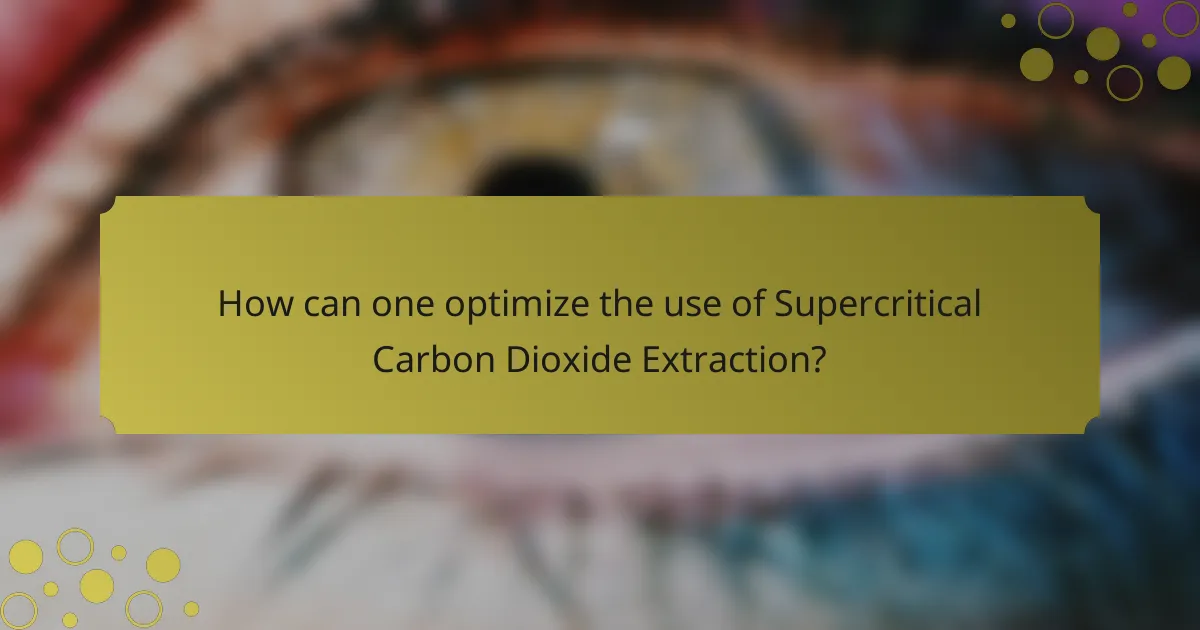
How can one optimize the use of Supercritical Carbon Dioxide Extraction?
To optimize the use of Supercritical Carbon Dioxide Extraction, one should control temperature and pressure precisely. Maintaining optimal conditions enhances extraction efficiency. For example, temperatures between 30°C to 60°C and pressures of 1000 to 5000 psi are commonly effective.
Using high purity CO2 improves the quality of extracted compounds. Additionally, adjusting the CO2 flow rate can influence the extraction yield. A slower flow rate allows for more thorough extraction.
Incorporating co-solvents can also enhance solubility for certain compounds. This technique can broaden the range of extractable materials. Regular maintenance of equipment ensures consistent performance and prevents contamination.
Monitoring extraction time is crucial; longer extraction does not always equate to better yield. Analyzing the extracted compounds can guide adjustments for future extractions. Implementing these strategies can significantly enhance the efficiency and effectiveness of Supercritical Carbon Dioxide Extraction.
What best practices should be followed for effective Supercritical Carbon Dioxide Extraction?
Use high-quality CO2 as the solvent for effective supercritical carbon dioxide extraction. Ensure the purity of the CO2 to avoid contamination of the final product. Maintain optimal temperature and pressure conditions throughout the extraction process. Typical conditions range from 31°C to 80°C and 73.8 to 3000 psi. Employ proper equipment designed for supercritical extraction to ensure safety and efficiency. Regularly calibrate and maintain extraction equipment to ensure consistent performance. Monitor the extraction time to optimize yield and quality. Conduct trials to determine the best parameters for specific materials being extracted. Each of these practices enhances the effectiveness and efficiency of the extraction process.
How can one troubleshoot common issues in Supercritical Carbon Dioxide Extraction?
To troubleshoot common issues in Supercritical Carbon Dioxide Extraction, first identify the specific problem. Common issues include inconsistent extraction yields, equipment malfunctions, and impurities in the final product.
For inconsistent yields, check the pressure and temperature settings. Optimal conditions typically range from 1000 to 3000 psi and temperatures between 30°C to 60°C.
If equipment malfunctions occur, inspect seals and connections for leaks. Regular maintenance is crucial for reliable operation.
To address impurities, ensure the CO2 is adequately purified before use. Contaminants can affect the quality of the extracted product.
Monitoring flow rates and adjusting them as needed can also resolve issues related to extraction efficiency.
These troubleshooting steps are supported by industry practices in extraction technology.
What advancements are being made to improve Supercritical Carbon Dioxide Extraction techniques?
Recent advancements in Supercritical Carbon Dioxide Extraction (SC-CO2) techniques focus on enhancing efficiency and selectivity. Innovations include the development of advanced extraction equipment that optimizes pressure and temperature control. These improvements enable better extraction yields and minimize processing time.
Furthermore, researchers are exploring the use of co-solvents to improve solubility for specific compounds. This method increases the range of materials that can be effectively extracted.
Additionally, advancements in automation and real-time monitoring technologies allow for more precise control over the extraction process. This leads to consistent product quality and reduced operational costs.
Studies have shown that these enhancements can lead to higher extraction efficiency, with some methods achieving up to 90% yield in specific applications. Overall, these advancements are making SC-CO2 extraction more viable for various industries, including food, pharmaceuticals, and cosmetics.
Supercritical Carbon Dioxide Extraction is a method that utilizes supercritical CO2 as a solvent to extract valuable compounds from various materials, particularly in the food, cosmetic, and pharmaceutical industries. This extraction technique operates under specific temperature and pressure conditions, allowing for the efficient separation of non-polar compounds while preserving their integrity and quality. The article covers the process, key components, benefits, environmental advantages, applications, and challenges associated with Supercritical Carbon Dioxide Extraction, as well as best practices for optimizing its use. Additionally, it highlights advancements in technology that enhance extraction efficiency and purity.
